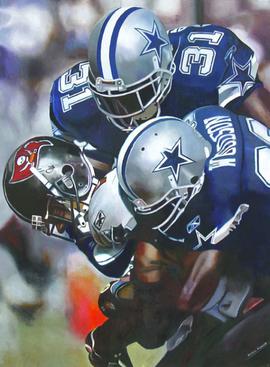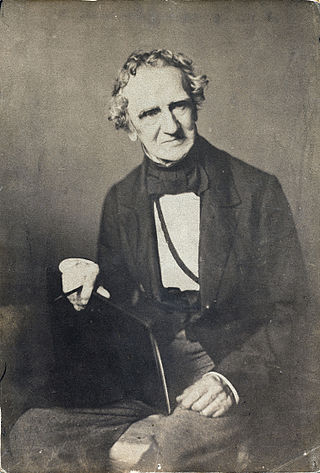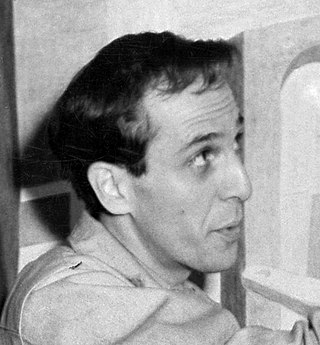
Kenneth Noland was an American painter. He was one of the best-known American color field painters, although in the 1950s he was thought of as an abstract expressionist and in the early 1960s he was thought of as a minimalist painter. Noland helped establish the Washington Color School movement. In 1977, he was honored by a major retrospective at the Solomon R. Guggenheim Museum in New York that then traveled to the Hirshhorn Museum and Sculpture Garden in Washington, D.C. and Ohio's Toledo Museum of Art in 1978. In 2006, Noland's Stripe Paintings were exhibited at the Tate in London.

Frank Philip Stella is an American painter, sculptor and printmaker, noted for his work in the areas of minimalism and post-painterly abstraction. Stella lives and works in New York City.

Malcolm A. Morley was a British-American artist and painter. He was known as an artist who pioneered in varying styles, working as a photorealist and an expressionist, among many other styles.

Helen Frankenthaler was an American abstract expressionist painter. She was a major contributor to the history of postwar American painting. Having exhibited her work for over six decades, she spanned several generations of abstract painters while continuing to produce vital and ever-changing new work. Frankenthaler began exhibiting her large-scale abstract expressionist paintings in contemporary museums and galleries in the early 1950s. She was included in the 1964 Post-Painterly Abstraction exhibition curated by Clement Greenberg that introduced a newer generation of abstract painting that came to be known as color field. Born in Manhattan, she was influenced by Greenberg, Hans Hofmann, and Jackson Pollock's paintings. Her work has been the subject of several retrospective exhibitions, including a 1989 retrospective at the Museum of Modern Art in New York City, and been exhibited worldwide since the 1950s. In 2001, she was awarded the National Medal of Arts.

Albert Bierstadt was a German-American painter best known for his lavish, sweeping landscapes of the American West. He joined several journeys of the Westward Expansion to paint the scenes. He was not the first artist to record the sites, but he was the foremost painter of them for the remainder of the 19th century.
Milton Clark Avery was an American modern painter. Born in Altmar, New York, he moved to Connecticut in 1898 and later to New York City. He was the husband of artist Sally Michel Avery and the father of artist March Avery.

Thomas Sully was an American portrait painter in the United States. Born in Great Britain, he lived most of his life in Philadelphia, Pennsylvania. He painted in the style of Thomas Lawrence. His subjects included national political leaders such as United States presidents: Thomas Jefferson, John Quincy Adams, and Andrew Jackson, Revolutionary War hero General Marquis de Lafayette, and many leading musicians and composers. In addition to portraits of wealthy patrons, he painted landscapes and historical pieces such as the 1819 The Passage of the Delaware. His work was adapted for use on United States coinage.

Philip Guston, was a Canadian American painter, printmaker, muralist and draftsman. Early in his five decade career, muralist David Siquieros described him as one of "the most promising painters in either the US or Mexico," in reference to his antifascist fresco The Struggle Against Terror, which "includes the hooded figures that became a lifelong symbol of bigotry for the artist." "Guston worked in a number of artistic modes, from Renaissance-inspired figuration to formally accomplished abstraction," and is now regarded one of the "most important, powerful, and influential American painters of the last 100 years." He also frequently depicted racism, antisemitism, fascism and American identity, as well as, especially in his later most cartoonish and mocking work, the banality of evil. In 2013, Guston's painting To Fellini set an auction record at Christie's when it sold for $25.8 million.

Ellsworth Kelly was an American painter, sculptor, and printmaker associated with hard-edge painting, Color Field painting and minimalism. His works demonstrate unassuming techniques emphasizing line, color and form, similar to the work of John McLaughlin and Kenneth Noland. Kelly often employed bright colors. He lived and worked in Spencertown, New York.

Sam Gilliam was an American color field painter and lyrical abstractionist artist. Gilliam was associated with the Washington Color School, a group of Washington, D.C.-area artists that developed a form of abstract art from color field painting in the 1950s and 1960s. His works have also been described as belonging to abstract expressionism and lyrical abstraction. He worked on stretched, draped and wrapped canvas, and added sculptural 3D elements. He was recognized as the first artist to introduce the idea of a draped, painted canvas hanging without stretcher bars around 1965. This was a major contribution to the Color Field School and has had a lasting impact on the contemporary art canon. Arne Glimcher, Gilliam's art dealer at Pace Gallery, wrote following his death that "His experiments with color and surface are right up there with the achievements of Rothko and Pollock."
The Washington Color School, also known as the Washington, D.C., Color School, was an art movement starting during the 1950s–1970s in Washington, D.C., in the United States, built of abstract expressionist artists. The movement emerged during a time when society, the arts, and people were changing quickly. The founders of this movement are Morris Louis and Kenneth Noland, however four more artists were part of the initial art exhibition in 1965.

Sir Richard Sheridan Patrick Michael Aloysius Franklin Bowling, known as Frank Bowling, is a British artist who was born in British Guiana. He is particularly renowned for his large-scale, abstract "Map" paintings, which relate to abstract expressionism, colour field painting and lyrical abstraction. Bowling has been described as "one of Britain’s greatest living abstract painters", as "one of the most distinguished black artists to emerge from post-war British art schools" and as a "modern master". British cultural critic and theorist Stuart Hall situates Bowling’s career within a first generation, or “wave” of post-war, Black-British art, one characterised by postwar politics and British decolonisation. He is the first black artist to be elected a member of the Royal Academy of Arts.

Pat Steir is an American painter and printmaker. Her early work was loosely associated with conceptual art and minimalism, however, she is best known for her abstract dripped, splashed and poured "Waterfall" paintings, which she started in the 1980s, and for her later site-specific wall drawings.

Paul Feeley was an artist and director of the Art Department at Bennington College during the 1950s and early 1960s.
Joan Snyder is an American painter from New York. She is a MacArthur Fellow, a Guggenheim Fellow, and a National Endowment for the Arts Fellow (1974).
Hugh O'Donnell is an English painter, printmaker and site-specific artist.
Avis Newman is an English painter and sculptor.
Bill Jensen is an American abstract painter.
Moira Dryer (1957–1992) was a Canadian artist known for her abstract paintings on wood panel.
Joe Wesley Overstreet was an African-American painter from Mississippi who lived and worked in New York City for most of his career. In the 1950s and early 1960s he was associated with the Abstract Expressionist movement.











